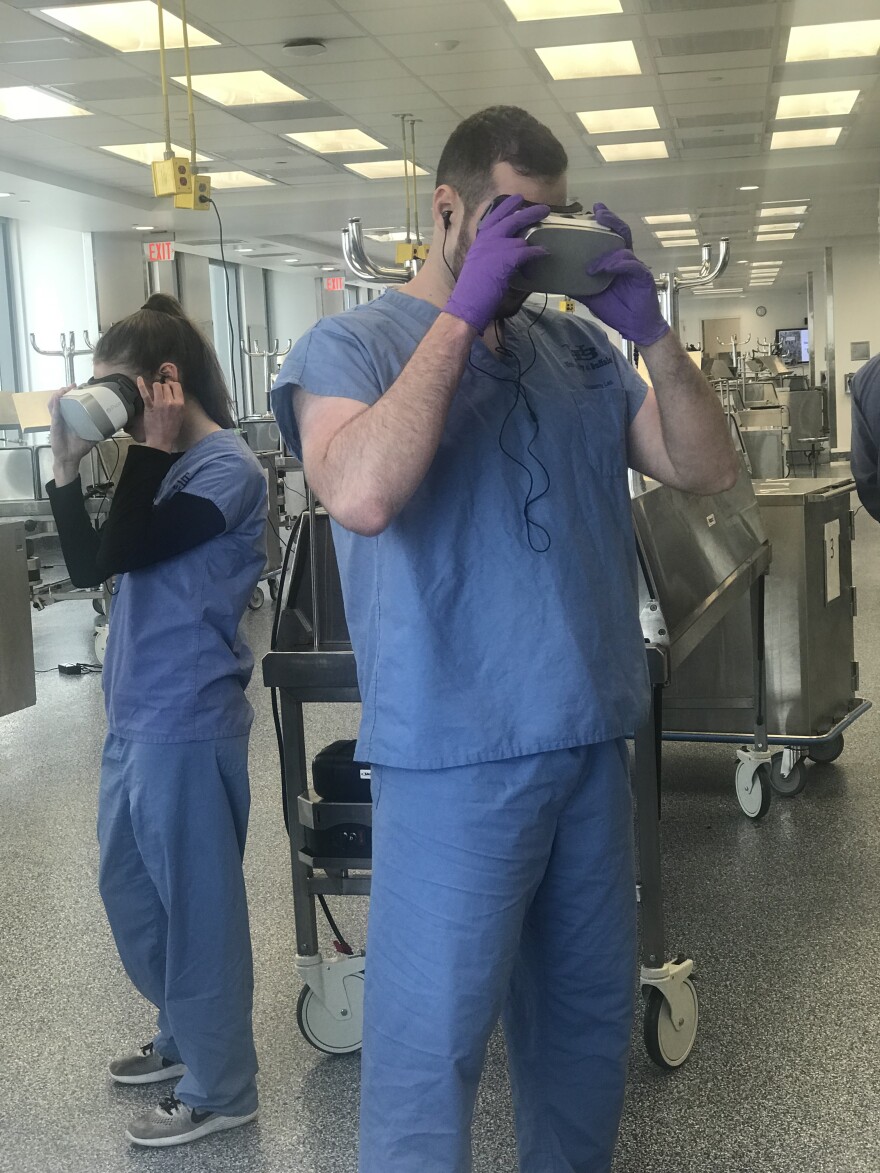Students at the University at Buffalo's Jacobs School of Medicine and Biomedical Sciences this summer are among the first to use a new technology to explore the human body. Virtual reality headsets are now part of the study materials for the school's gross human anatomy class. Instructor Stuart Inglis says "the sky is the limit" when it comes to virtual reality tools supplementing traditional lab learning.
"There are virtual brain tours that can be done. There's also simulations related to field work and emergency crisis handling situations. When there's a disaster, for first responders to be able to come in. Simulations of these so they're immersed in that environment," Inglis said.
The headsets will be used in addition to time spent studying text, images, and human cadavers. But Inglis says new research shows students tend to retain information better when virtual reality supplements their learning.
The virtual reality headsets allow students to view organs in a three-dimensional image, a big step up from photos and drawings in textbooks. Students are able to see functions of the liver, look inside the abdominal cavity, and listen to the explanation of dissections.
Madeline Cappellazzo, an undergraduate student finds the technology helpful in picturing organs before going to class.
"I think it's really hard to picture how it looks in a body from just colored images," Cappellazzo. "This really adds another level and it makes it easier to get a picture in your head."
Click https://vimeo.com/crosswater/review/345562822/bc2d33a43b" target="_blank">here to watch a video showing what the students see in the VR headsets.

